Training for an 8000-meter Peak
Blogs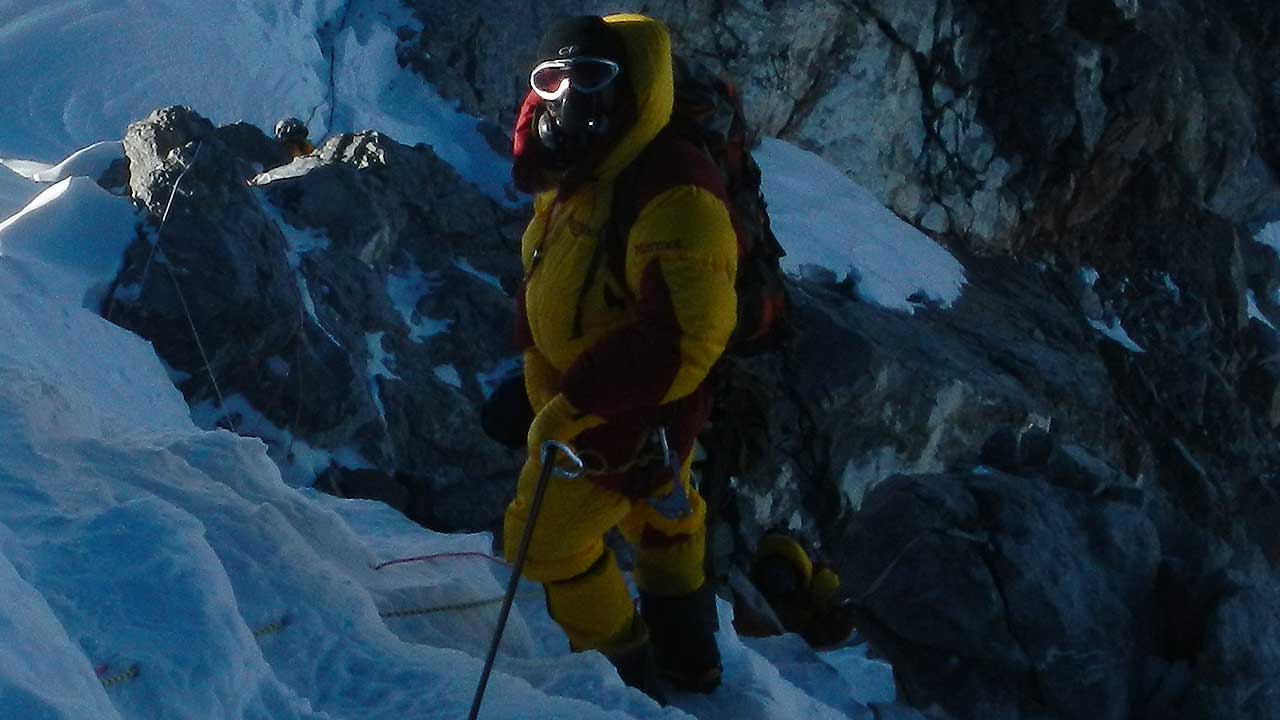
Introduction
Overview of 8,000-Meter Peaks
Climbing an 8,000-meter peak is one of the most formidable challenges in mountaineering. These towering giants, often called the “Death Zone” due to the extreme conditions above 8,000 meters, require climbers to endure physical and psychological hardships that push the limits of human endurance. The allure of standing on top of the world’s highest mountains, such as Mount Everest, K2, or Kangchenjunga, is a powerful motivator, but the path to these summits is fraught with danger. Only a fraction of those who attempt these peaks succeed, and the risks include severe altitude sickness, extreme weather, and the genuine possibility of death. Therefore, meticulous preparation and rigorous training are essential to increase the chances of success and survival.
Importance of Proper Training
Proper training is the cornerstone of a successful 8,000-meter climb. The unique and extreme demands of high-altitude climbing mean that general fitness alone is not enough. Climbers must prepare their bodies and minds for the challenges they will face, including low oxygen levels, freezing temperatures, and the mental strain of prolonged exertion in an inhospitable environment. Comprehensive training encompasses cardiovascular conditioning, strength building, endurance training, mental preparation, and technical skills development. It’s not just about being physically strong; climbers must also be mentally resilient and technically proficient. This blog will explore the key aspects of training for an 8,000-meter peak, offering a guide for those aiming to reach the world’s highest summits.
Understanding the Challenges of High-Altitude Climbing

Physical Demands
Climbing at altitudes above 8,000 meters presents extraordinary physical challenges. The most significant is the severe reduction in oxygen availability. At these heights, the air contains about one-third of the oxygen found at sea level, which places immense strain on the body. The cardiovascular system must work much harder to deliver oxygen to muscles, which can lead to rapid fatigue and decreased physical performance. Additionally, the cold temperatures at high altitudes can be brutal, often dropping to -30°C or lower, leading to risks such as frostbite and hypothermia. The body’s energy expenditure is also significantly increased, requiring climbers to consume large amounts of calories to sustain themselves. Weight loss is common, and muscle deterioration can occur quickly, weakening the climber as they ascend.
Psychological Challenges
The psychological demands of high-altitude climbing are equally daunting. Climbers face extreme isolation, often spending weeks in remote locations far from civilization. The long periods of waiting, sometimes in cramped and uncomfortable tents, can lead to boredom and frustration. The constant presence of danger, from avalanches to crevasses, creates a persistent undercurrent of fear that can be mentally exhausting. Sleep deprivation, due to altitude-related insomnia, exacerbates this mental fatigue. Climbers must also contend with the unpredictability of the environment—storms can roll in unexpectedly, forcing rapid changes in plans. Mental toughness is crucial for overcoming these psychological obstacles, and climbers must be prepared to push through fear, fatigue, and the constant temptation to turn back.
Acclimatization
Acclimatization is the process by which the body gradually adapts to the lower oxygen levels found at high altitudes. This is a critical component of any 8,000-meter peak climb, as proper acclimatization can mean the difference between success and failure—or even life and death. Without adequate acclimatization, climbers are at high risk for altitude sickness, which can manifest in symptoms ranging from headaches and nausea to life-threatening conditions such as high-altitude cerebral edema (HACE) and high-altitude pulmonary edema (HAPE). The acclimatization process involves spending progressively longer periods at higher altitudes, allowing the body to adjust. This often requires a carefully planned schedule of climbing to higher altitudes, and then descending to sleep at lower elevations, a strategy known as “climb high, sleep low.” Understanding and respecting the acclimatization process is crucial for any climber aiming to tackle an 8,000-meter peak.
Pre-Training Preparations
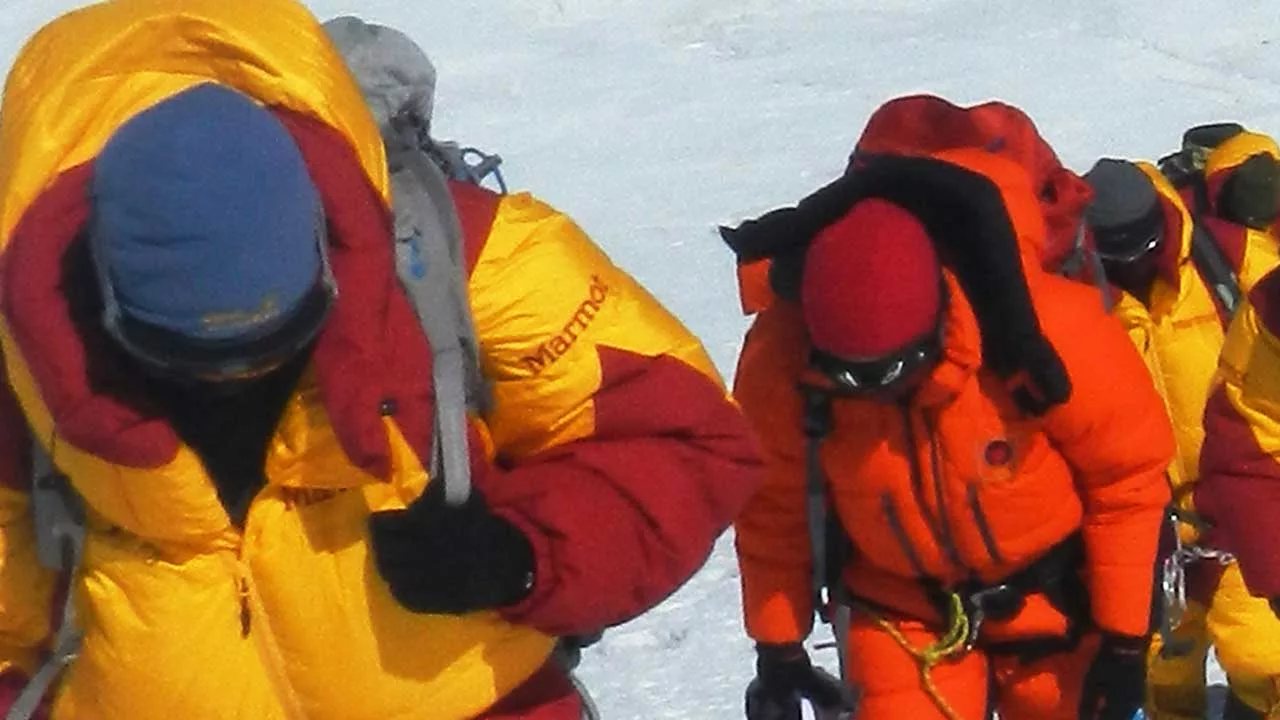
Health Assessment
Before embarking on the rigorous training required for an 8,000-meter peak, a comprehensive health assessment is essential. This should include a full medical check-up to identify any underlying health issues that could be exacerbated by high-altitude conditions. Cardiovascular health is particularly important, as the heart and lungs will be under extreme stress during the climb. It’s also advisable to consult with a sports medicine specialist who understands the specific demands of high-altitude climbing. They can guide managing any pre-existing conditions and recommend necessary precautions. Additionally, a fitness assessment will help determine your current physical condition and highlight areas that need improvement. Knowing your baseline fitness levels allows for a more tailored and effective training plan.
Setting Realistic Goals
Setting realistic goals is crucial for both training and the climb itself. While the ultimate objective may be reaching the summit, it’s important to break down this goal into smaller, achievable milestones. These could include completing certain training benchmarks, such as running a marathon, increasing the weight you can lift, or successfully summiting lower peaks as part of your preparation. Each milestone should be seen as a step towards the final goal, helping to build confidence and maintain motivation. It’s also important to be honest about your limitations—both physical and mental. Climbing an 8,000-meter peak is a monumental challenge, and not everyone will succeed on their first attempt. By setting realistic and progressive goals, you can ensure steady progress and minimize the risk of injury or burnout.
Research and Planning
Thorough research and planning are vital components of any high-altitude expedition. Understanding the specific peak you plan to climb, including its routes, weather patterns, and potential hazards, is essential for making informed decisions during the ascent. Start by studying maps, guidebooks, and trip reports from other climbers who have attempted the same peak. It’s also beneficial to consult with experienced mountaineers or hire a guide who has extensive knowledge of the mountain. Planning should also include logistical considerations such as obtaining permits, organizing gear, and arranging for transportation to and from the base camp. A well-researched plan reduces uncertainties and helps ensure that you’re fully prepared for the challenges ahead.
Physical Training Regimen
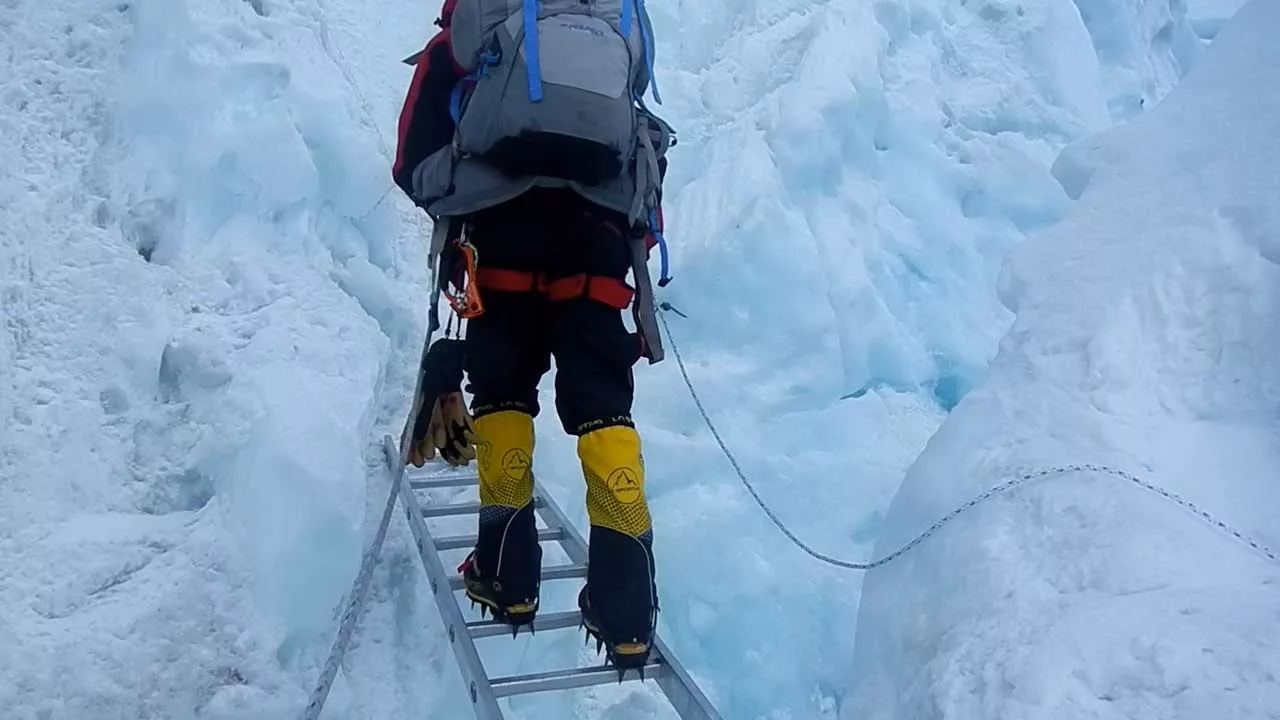
Cardiovascular Conditioning
One of the most critical aspects of training for an 8,000-meter peak is cardiovascular conditioning. Your heart and lungs need to be in top shape to cope with the reduced oxygen levels at high altitudes. A strong cardiovascular system will enable you to maintain a steady pace during long ascents and recover more quickly from exertion. Incorporate a variety of aerobic exercises into your training regimen, including running, cycling, swimming, and hiking. High-intensity interval training (HIIT) can be particularly effective for building endurance and improving oxygen utilization. Aim for at least five cardio sessions per week, gradually increasing the duration and intensity as your fitness improves. In addition to traditional cardio, consider incorporating activities like stair climbing or hill sprints, which closely mimic the demands of ascending a steep mountain.
Strength Training
While cardiovascular fitness is crucial, strength training is equally important for high-altitude climbing. Your legs, core, and upper body must be strong enough to handle the physical demands of carrying a heavy pack, climbing steep slopes, and navigating technical terrain. Focus on compound movements that engage multiple muscle groups, such as squats, lunges, deadlifts, and pull-ups. These exercises will help build the functional strength needed for climbing. Core exercises like planks, Russian twists, and hanging leg raises are essential for stability and balance on uneven terrain. Don’t neglect your upper body—exercises like push-ups, bench presses, and rows will develop the strength needed for pulling yourself up steep sections and handling your equipment. Incorporate strength training into your routine three to four times a week, with a focus on progressively increasing the weight and resistance.
Endurance Training
Endurance is a key factor in high-altitude climbing, as the ability to sustain prolonged physical activity is essential for summit attempts that can last 12-16 hours or more. Long, steady-state cardio sessions, such as multi-hour hikes or long-distance cycling, are effective for building endurance. It’s also important to simulate the conditions you’ll face on the mountain by training with a loaded backpack. Start with lighter weights and gradually increase the load as your strength and endurance improve. Consider incorporating “back-to-back” training sessions, where you complete two long endurance workouts on consecutive days, to mimic the fatigue you’ll experience during the climb. Additionally, multi-day treks with elevation gain are excellent for building both endurance and acclimatization experience.
Flexibility and Balance
Flexibility and balance are often overlooked but are crucial components of mountaineering fitness. A flexible body is less prone to injury, especially in the cold, rigid environment of high altitudes. Incorporate regular stretching into your routine, focusing on the legs, hips, back, and shoulders. Yoga is particularly beneficial, as it not only improves flexibility but also enhances balance and mental focus. Balance exercises, such as standing on one leg or using a balance board, can help improve your stability on uneven and slippery surfaces. Pilates is another excellent option for strengthening the core and enhancing body control. Aim to include flexibility and balance training at least two to three times per week as part of your overall fitness regimen.
Specific Altitude Training
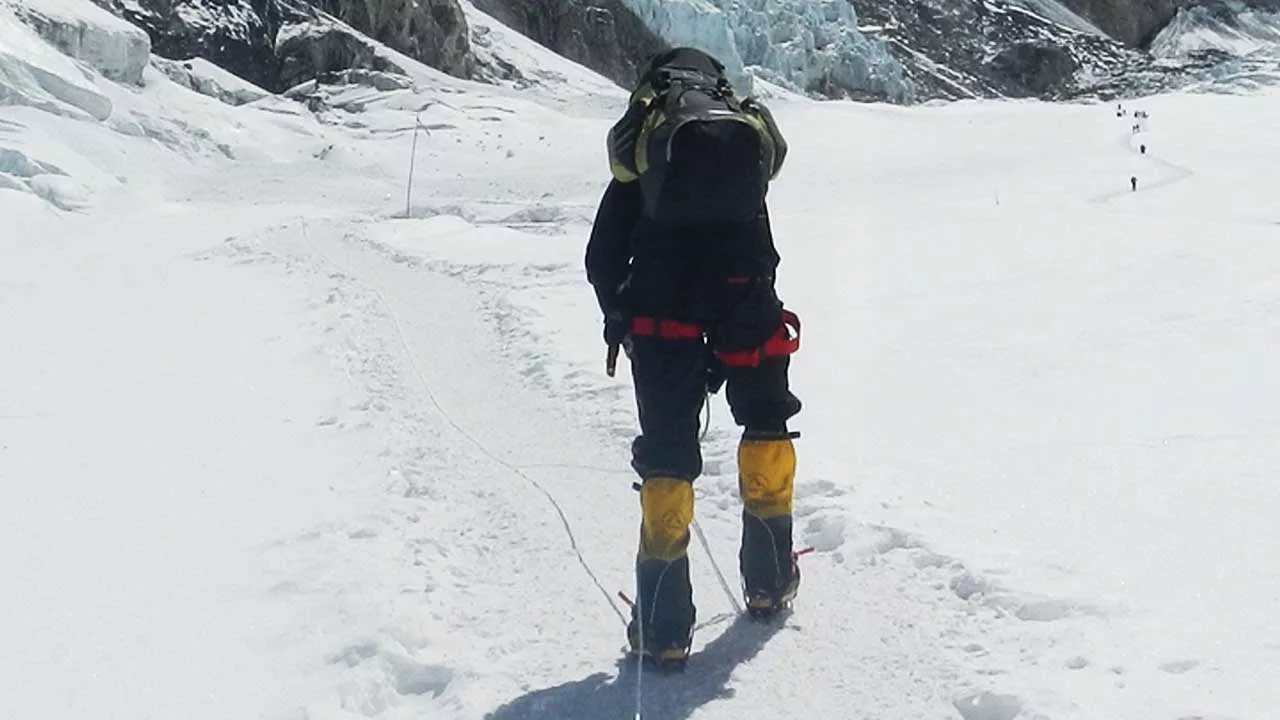
Simulated Altitude Training
Simulated altitude training is a valuable tool for preparing your body for the low-oxygen environment of an 8,000-meter peak. This type of training typically involves using altitude chambers, hypoxic tents, or specialized masks that reduce the amount of oxygen you breathe, simulating the conditions at higher elevations. Training at simulated altitudes can help your body adapt by increasing red blood cell production, enhancing oxygen transport, and improving your overall aerobic capacity. This method is particularly useful for those who don’t have regular access to high-altitude environments. However, it’s important to use these tools under professional supervision, as improper use can lead to overtraining or altitude sickness. Incorporate simulated altitude sessions gradually into your training, starting with shorter durations and lower intensities.
High-Altitude Treks
Spending time at high altitudes is one of the best ways to prepare your body for an 8,000-meter peak. High-altitude treks provide an opportunity to acclimatize, test your gear, and build the specific fitness required for mountaineering. Plan several treks to progressively higher elevations, starting with peaks in the 3,000 to 4,000-meter range and gradually working your way up to 5,000 meters and beyond. During these treks, pay close attention to how your body responds to the altitude—this will help you gauge your acclimatization process and adjust your pace accordingly. These treks also allow you to practice important skills like pacing, hydration, and nutrition at altitude. Aim to complete at least one high-altitude trek every few months as part of your training.
Progressive Altitude Exposure
Gradually exposing your body to higher altitudes over time is crucial for successful acclimatization. This can be achieved through a combination of simulated altitude training, high-altitude treks, and staged ascents during the actual climb. For instance, many climbers use a strategy of “climb high, sleep low” to acclimatize—climbing to a higher altitude during the day and then descending to a lower altitude to sleep. This approach helps the body adjust more effectively to the reduced oxygen levels. During your training, you can simulate this by spending time at moderate altitudes (2,000-3,000 meters) and gradually increasing your exposure. Consider spending weekends in mountainous regions or using an altitude tent at home to sleep at higher simulated altitudes.
Mental Preparation
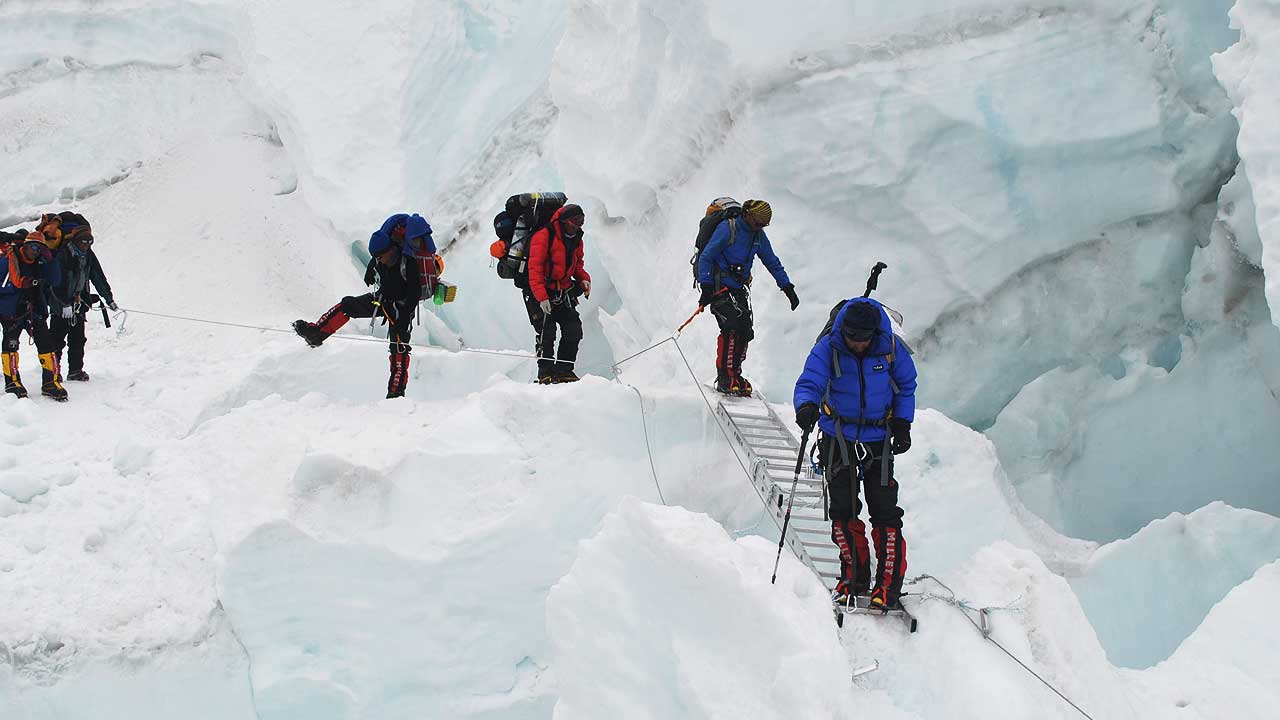
Building Mental Resilience
Mental resilience is one of the most critical factors in high-altitude climbing. The ability to remain focused, positive, and determined in the face of extreme physical and psychological challenges is essential for success. Techniques such as meditation, visualization, and mindfulness can help build mental resilience. Meditation can improve concentration and reduce stress, while visualization—imagining yourself successfully reaching the summit—can boost confidence and motivation. Mindfulness practices, which involve staying present and focused on the task at hand, can help manage anxiety and prevent mental fatigue. Regularly incorporating these techniques into your training routine will strengthen your mental fortitude and prepare you for the psychological demands of the climb.
Dealing with Fear and Uncertainty
Fear and uncertainty are natural aspects of high-altitude climbing, but they must be managed effectively to avoid being overwhelmed. One of the best ways to deal with fear is through preparation—knowing your route, understanding the risks, and being confident in your abilities. Mental training exercises, such as exposure therapy (gradually facing and overcoming fears), can help reduce anxiety. During your training, simulate challenging conditions, such as climbing in poor weather or at night, to build confidence in your ability to handle adversity. It’s also important to accept that some level of fear is normal and can even be beneficial, as it keeps you alert and cautious. The key is to prevent fear from turning into panic or paralysis.
Staying Motivated
Maintaining motivation during the long and arduous training process can be challenging. To stay motivated, set clear, achievable goals and celebrate each milestone along the way. Surround yourself with supportive people, such as training partners, coaches, or mentors, who can provide encouragement and accountability. Regularly remind yourself of why you’re undertaking this challenge—whether it’s the thrill of adventure, the desire to push your limits or the dream of standing on a summit. Visualization techniques can also help maintain motivation by keeping your ultimate goal in sight. Finally, be flexible and allow yourself to adjust your training plan if you encounter setbacks—progress is more important than perfection.
Nutrition and Hydration
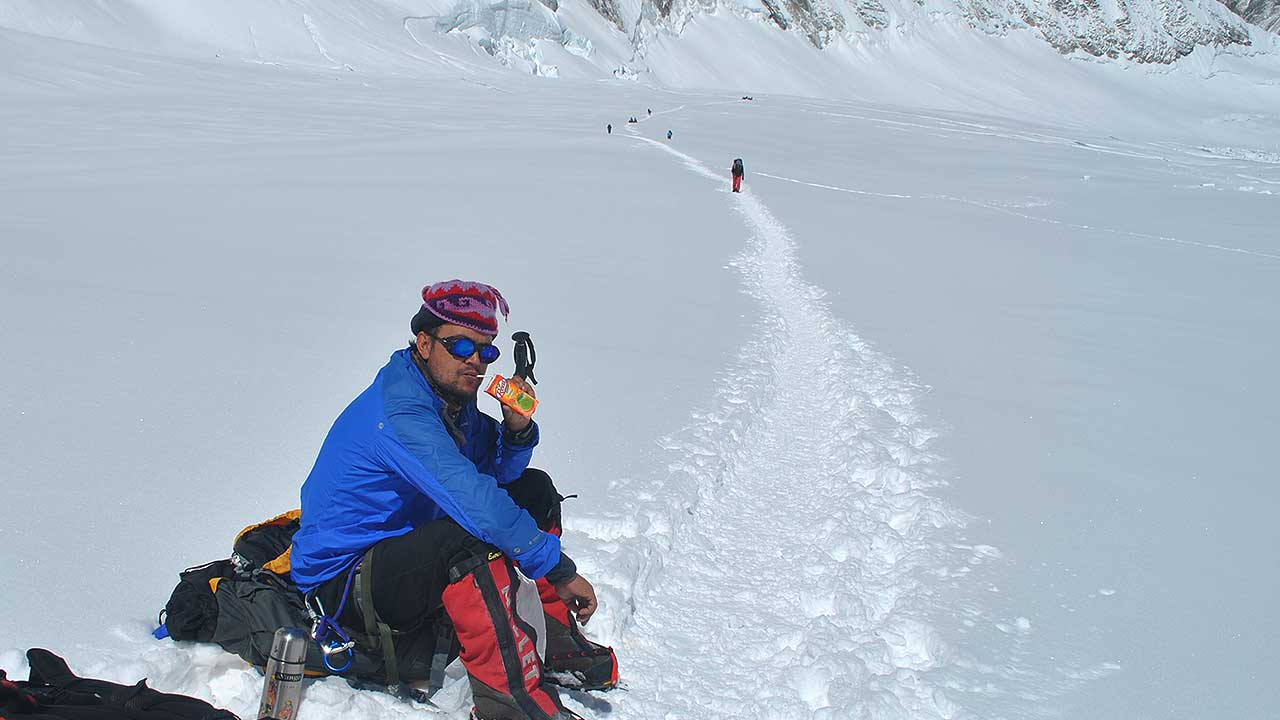
Diet for High-Altitude Climbing
Nutrition plays a crucial role in preparing for and executing a high-altitude climb. Your diet should be tailored to support intense physical activity and recovery while also providing the necessary fuel for endurance. Focus on a balanced diet rich in complex carbohydrates, lean proteins, and healthy fats. Carbohydrates are particularly important at high altitudes, as they provide a readily available source of energy. Include whole grains, fruits, and vegetables in your diet to ensure you’re getting enough vitamins and minerals. Protein is essential for muscle repair and recovery, so incorporate sources like lean meats, eggs, dairy, and plant-based options. As your training intensifies, consider increasing your calorie intake to match your energy expenditure. On the mountain, energy-dense foods like nuts, dried fruit, and energy bars are practical and effective.
Hydration Strategies
Staying hydrated is critical at high altitudes, where the body loses fluids more rapidly through respiration and perspiration. Dehydration can exacerbate the symptoms of altitude sickness and reduce physical performance. Aim to drink at least 3-4 liters of water per day during training and on the mountain. It’s important to monitor your hydration levels by checking the color of your urine—it should be light yellow or clear. During the climb, carry a hydration system or water bottles that are easy to access, and consider using insulated containers to prevent water from freezing in cold conditions. Electrolyte supplements can also be beneficial for maintaining fluid balance and preventing cramping.
Supplementation
Supplements can play a role in enhancing your performance and recovery during high-altitude training and climbing. Common supplements include multivitamins, iron (to support red blood cell production), and vitamin D (especially if your training is mostly indoors). Creatine can help with strength training, while beta-alanine and nitrates (found in beetroot juice) may improve endurance by buffering lactic acid and enhancing oxygen utilization. Some climbers also use altitude-specific supplements like acetazolamide (Diamox) to aid acclimatization, though these should be used under medical supervision. It’s important to consult with a healthcare provider before starting any supplementation regimen, as individual needs vary.
Gear and Equipment Familiarization

Choosing the Right Gear
Selecting the right gear is essential for a successful and safe climb. Start by researching the specific equipment recommended for your target peak, including clothing, boots, backpacks, and technical gear like crampons and ice axes. Invest in high-quality gear that is designed for extreme conditions—your life may depend on it. Key considerations include the warmth and waterproofing of your clothing, the fit and durability of your boots, and the capacity and comfort of your backpack. Don’t forget smaller items like gloves, hats, and eyewear, which are crucial for protecting against the elements. It’s also important to consider weight—every ounce counts when you’re climbing at high altitudes, so opt for lightweight, multi-functional gear where possible.
Using Technical Equipment
Mastering the use of technical equipment is a critical part of high-altitude climbing. This includes knowing how to properly use crampons, ice axes, ropes, harnesses, and carabiners. If you’re new to these tools, consider taking a mountaineering course or practicing with experienced climbers. Skills like self-arrest (using an ice axe to stop a fall), crevasse rescue, and rope management are essential for safety on the mountain. Practice these techniques repeatedly until they become second nature. Additionally, make sure you’re familiar with the operation of any electronic devices you plan to use, such as GPS units, radios, and headlamps. Regular practice with your technical gear will build confidence and ensure you’re prepared for any situation.
Practice with Your Gear
Training with the gear you’ll use on the mountain is essential for ensuring comfort and familiarity. Wear your boots, backpack, and clothing during training hikes to break them in and identify any potential issues, such as blisters or chafing. Practice setting up and taking down your tent, cooking with your camp stove, and using your climbing gear in realistic scenarios. This will not only help you become more efficient but also allow you to troubleshoot any problems before you’re on the mountain. Familiarity with your gear reduces stress and increases your ability to focus on the climb itself rather than worrying about equipment malfunctions.
Training Schedule and Milestones

Creating a Training Schedule
A well-structured training schedule is key to preparing for an 8,000-meter peak. Begin by mapping out your training over 6 to 12 months, gradually increasing intensity and complexity as you progress. Your schedule should include a mix of cardiovascular conditioning, strength training, endurance workouts, flexibility exercises, and altitude training. Start with general fitness building in the early months, focusing on increasing your aerobic capacity and overall strength. As you move closer to the climb, incorporate more specific training, such as carrying a loaded backpack, high-altitude treks, and technical skills practice. Allocate time for rest and recovery to prevent overtraining. A sample week might include three days of cardio, two days of strength training, one day of endurance training, and one rest day.
Monitoring Progress
Regularly monitoring your progress is essential to ensure you’re on track and making the necessary improvements. Keep a training log to record your workouts, noting distances, weights, times, and how you felt during each session. This will help you identify patterns, track improvements, and adjust your training plan as needed. Periodic fitness assessments, such as VO2 max tests or strength benchmarks, can provide objective measures of your progress. It’s also important to pay attention to your body—if you’re feeling fatigued or experiencing pain, it may be a sign to scale back and focus on recovery. Regular check-ins with a coach or mentor can provide valuable feedback and keep you motivated.
Incorporating Rest and Recovery
Rest and recovery are critical components of any training program, especially when preparing for an 8,000-meter peak. Overtraining can lead to injury, burnout, and decreased performance, so it’s important to balance intense training with adequate rest. Incorporate at least one full rest day per week, and consider using active recovery techniques such as gentle yoga, swimming, or light stretching on other days. Sleep is also crucial for recovery—aim for 7-9 hours per night, and consider naps if your training load is particularly heavy. Nutrition plays a role in recovery as well—focus on post-workout meals that include a mix of protein and carbohydrates to replenish glycogen stores and support muscle repair.
Conclusion
Final Thoughts on Preparing for an 8,000-Meter Peak
Training for an 8,000-meter peak is a monumental challenge that requires a comprehensive, well-rounded approach. From physical conditioning and technical skills to mental resilience and proper nutrition, every aspect of preparation is crucial for success. The journey to the summit is not just about reaching the top, but about the dedication, discipline, and determination required along the way. By following a structured training plan, setting realistic goals, and staying committed to your preparation, you can increase your chances of not only reaching the summit but also doing so safely. Remember, the mountains will always be there—what matters most is that you’re prepared to take them on when the time is right.
Training for an 8000-meter Peak – Contact Us